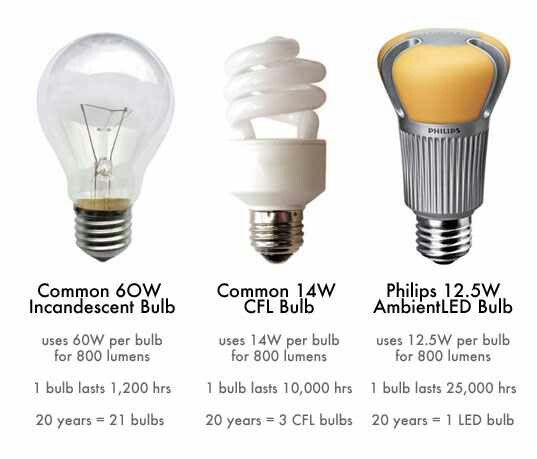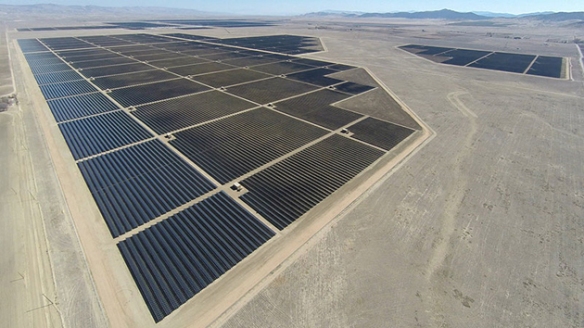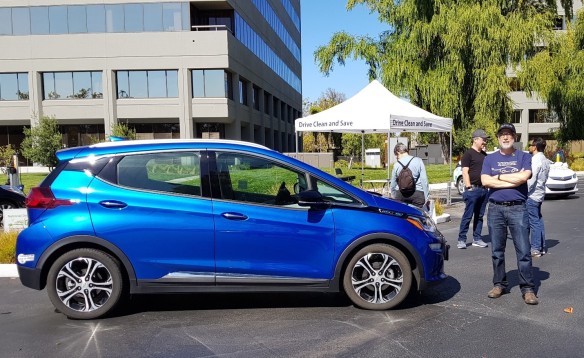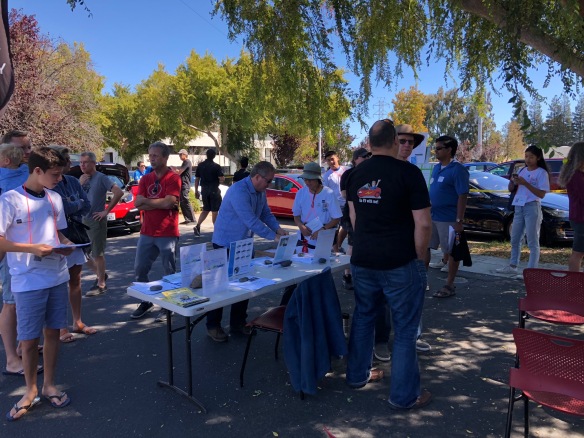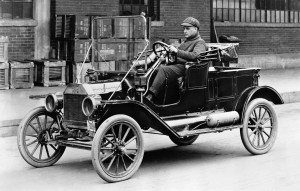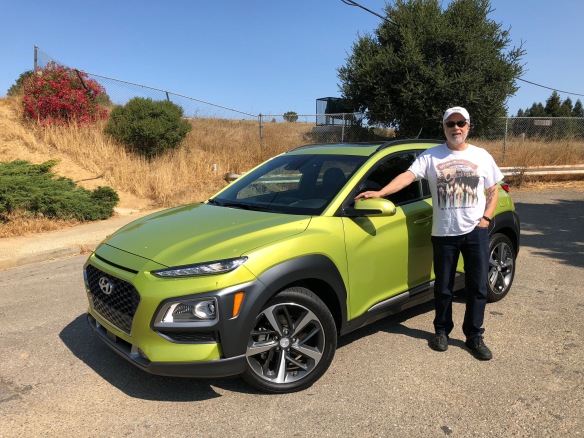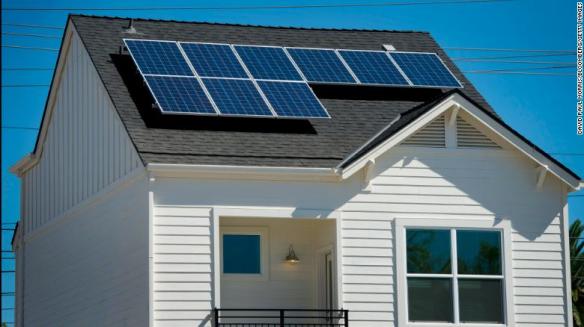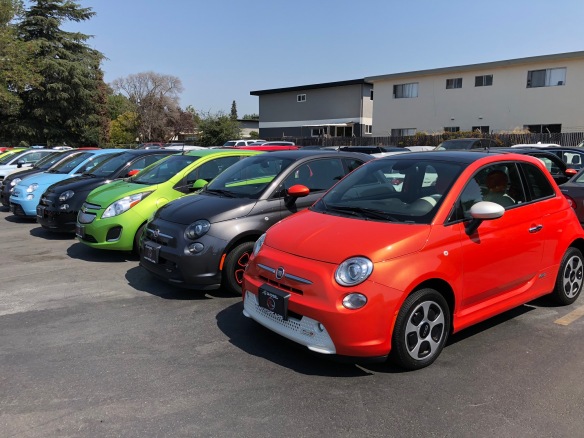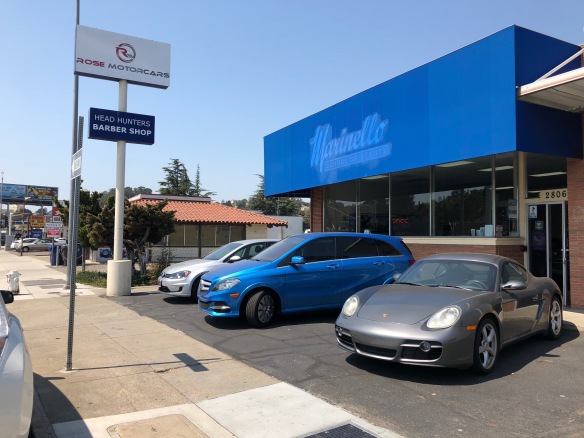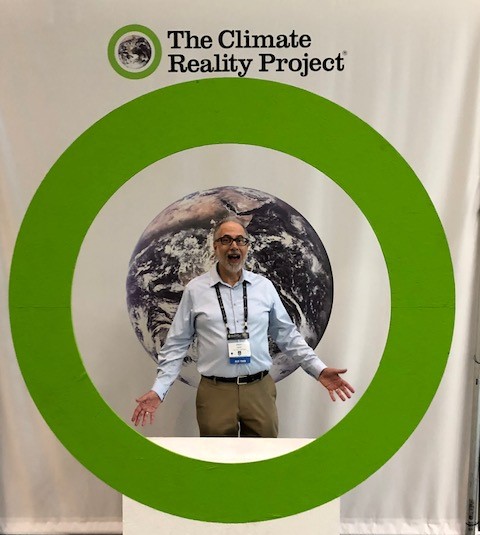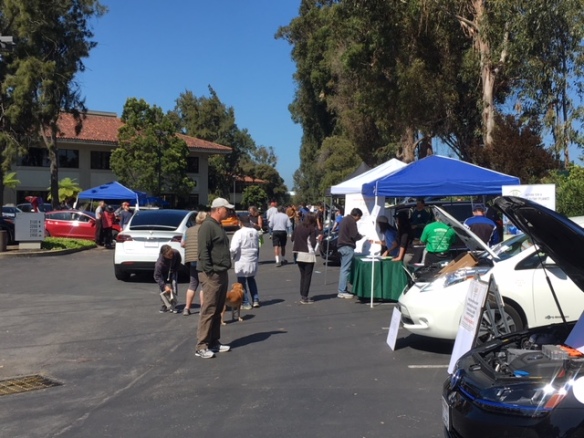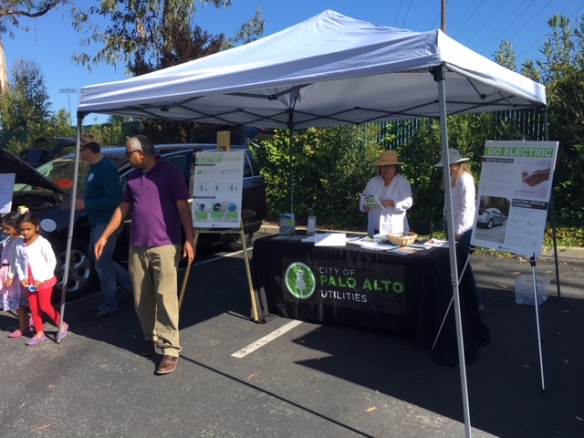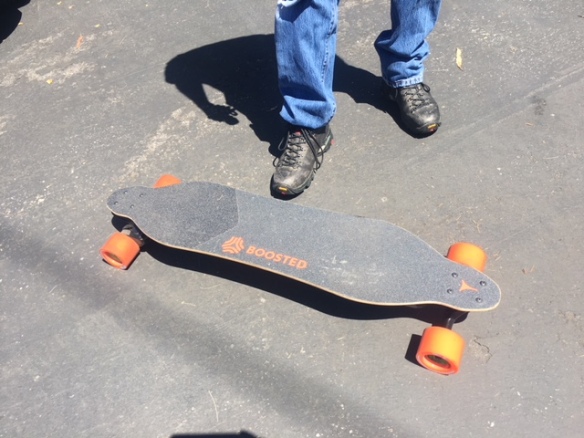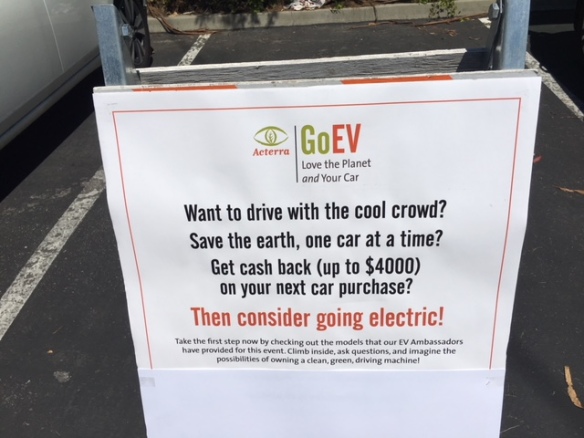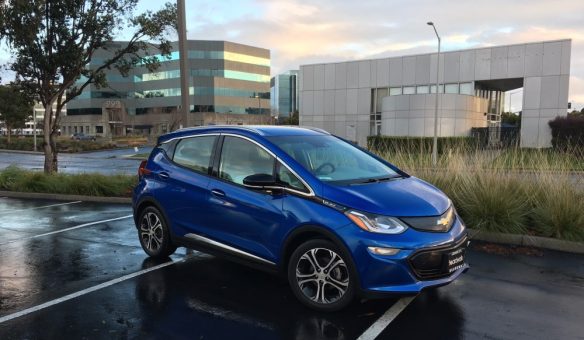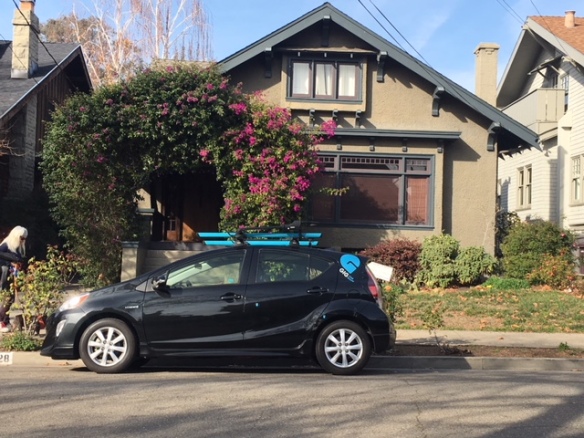by Steve Schaefer
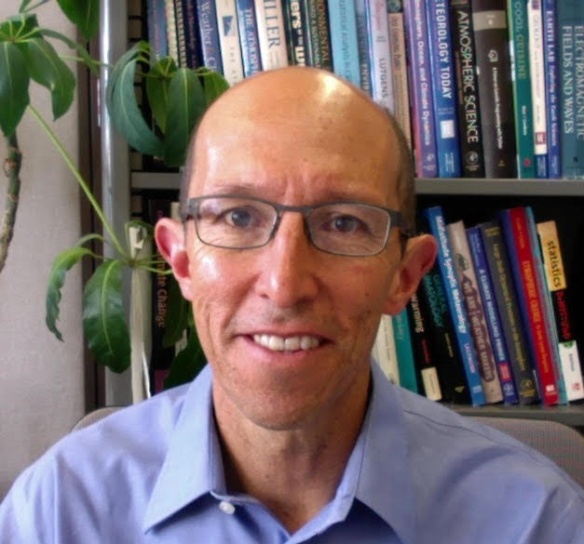
Eugene Cordero, Ph.D. is a climate scientist who teaches in the Department of Meteorology and Climate Science at San Jose State University. Dr. Cordero believes that youth education is a key factor in the efforts to mitigate global warming and adapt to a future of climate change.
Cordero spoke on November 14th to an attentive audience at the Acterra Fall Lecture Series at the Foster Art and Wilderness Foundation in Palo Alto.
Besides his teaching, Cordero has worked for the last few years to create the Green Ninja program for middle school science students. It was recently approved by the State of California and will be on the list that California’s approximately 1,000 school districts can choose from for their science education curriculum.
The Green Ninja videos have been enjoyed on YouTube for years. They combine scientific information about climate change with humor and silliness. This is how you get attention from young people today.
Dr. Cordero began his career researching the ozone hole. After his work concluded, he moved into the realm of climate science. His involvement with the ozone crisis impressed him with how scientists recommended a solution—replacing the chemicals that caused the ozone depletion—and turned back the dire consequences of losing the protection of the ozone layer.
“Without this change, people would be getting sunburns in five minutes by 2050,” he said. Today, the ozone layer is recovering.
In his presentation, Cordero explained basic climate change science before delving into the Green Ninja content. He presented a bar chart showing the now familiar rapid temperature rise over the last 100 years, especially in the last 30. He showed images of large glaciers from 100 years ago that are lakes today. He talked about the massive storms we are getting now and the billions of dollars in damage they leave in their wake.
Limiting the Earth’s average temperature rise to 2 degrees Celsius is the target, Cordero said, although the recent, frightening IPCC report from the U.N. proposes 1.5 degrees. In any case, there are many actions we need to take right now.
Cordero listed essential areas we associate with making change—inspiration, knowledge, and leadership—but said we’re missing a key piece—education. He has devoted his work to interacting directly with his students and creating a way to scale up to teaching thousands of students through his Green Ninja program.
Cordero collaborated with Laura Stec on a book, Cool Cuisine, that shows how you can reduce your carbon footprint by eating foods that have less environmental impact. For example, the energy to produce a serving of beef is around five times that of chicken. Eating vegetables instead is a small fraction of that. This research helped Cordero focus on stories for a younger audience, which is where Green Ninja came from.
The Green Ninja project started out with videos, games and events. Then, Cordero ran two case studies with middle school kids and university students. After the research was over, he surveyed the participants and found that effective changes in behavior came down to three important attitudes:
- Climate change is personal
- Climate change is fixable
- It’s important to take action
The three things that the participants were most likely to do now to reduce their carbon footprint were:
- Drive a hybrid vehicle
- Eat a vegetarian diet
- Buy energy-efficient appliances
Based on this research, Cordero began his educational programs. Sticking with threes, Cordero found three factors that led students, after they were out of school, to make steps to lower their carbon footprint. They:
- Felt a personal connection to the issue
- Felt a sense of empowerment
- Had an empathy for the environment
The Green Ninja program is designed to support those factors, and is based on the Next Generation Science Standards, which have a direct connection to climate change, especially in California. And that’s where the program is going to be available first.
The original Green Ninja videos were specially designed to make science interesting and engaging. For example, see the classic Styrofoam Man, a six-minute live action saga that’s corny, slapstick comedy, but with a message. The Green Ninja show videos in the program are cartoons, like this one.

“Climate change is a depressing subject,” said Cordero. “Humor helps to connect to young people.”
The program targets 6th, 7th, and 8th graders, and focuses on each student’s own story, environmental solutions, as well as data and technology. There’s a lot of hands-on activity, where kids bring home what they learn at school and show their families how to make positive changes. This is very empowering.
The Green Ninja materials give Cordero a chance to scale up his work at San Jose State. He hopes that a lot of schools will take up his program soon. You can reach him at eugene@greenninja.org
Acterra’s mission is to bring people together to create local solutions for a healthy planet.


